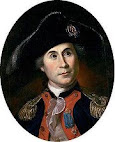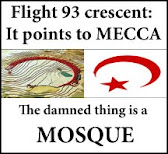Thank you to all veteran's and especially to those from who have served from my family and to my father in law, Albert Rogers who served in U.S. Navy on the USS Lexington, known as the 'Blue Ghost'. Thanks Al. This is is for you and so many others. My father served in U.S. Air Force and my grandfather, U.S. Army. Both have been gone for many year and I just want thank them both, Herbert 'Herb' my father and my grandfather, Harold 'Harry'.
Your service and sacrifice by all means produced the greatest generations of America and defined for history, the meaning of AMERICAN EXCEPTIONALISM.
As I am in the Pacific Northwest, I felt it was time to honor an Infantry Division from this region, the 41st Infantry Division. The 41st gained honor for their service in Pacific theater during World War Two
"The 41st Infantry Division was composed of National Guard units from Idaho, Montana, Oregon, North Dakota and Washington (U.S. state) that saw active service in World War I and World War II. It was one of the first to engage in offensive ground combat operations during the last months of 1942. In 1965 it was reorganized as the 41st Infantry Brigade. The Brigade has seen combat in the Iraq war in 2003 and is on alert at this moment for deployment in 2014."
There is quite a bit of information and books on the 41st Infantry Division and it would make a very long post. Below you will find some of the history of the 41st from the Pacific theater during World War Two. Still a long post but very informative and interesting reading and the least I can do to say thank you to ALL of our Veterans. PatriotUSA
 | ||
| 41st Infantry Division shoulder sleeve insignia |
***********************
The Jungleers-41st Infantry Division
Deployed overseas
In February 1942, the 41st Infantry Division was alerted for overseas movement. It handed over its coastal defence responsibilities to the 3rd Infantry Division and concentrated at Fort Lewis. First to depart was the 162nd Infantry, 641st Tank Destroyer Battalion, and 41st Reconnaissance Troop, which entrained later that month for Fort Dix. This group departed the Brooklyn Navy Yard on 3 March 1942 and sailed for the Pacific via the Panama Canal, reaching Melbourne on 9 April. They were among the first U.S. military units to be engaged in offensive ground combat operations. (The others were the 32nd who preceded them into combat on New Guinea, the Americal and the 1st Marine on Guadalcanal, Carlson's Raiders on Makin Island, and the 9th, 3rd Infantry and the 2nd Armored Divisions who fought in North Africa.)
Recently arrived troops of the 41st Infantry Division are reviewed by Australian Army Minister Frank Forde on 14 April 1942, accompanied by Major General Horace H. Fuller. Note the World War I style M1917A1 Steel helmets.
In July the division moved by rail to Rockhampton, Queensland.[4][2]:27 The division had arrived in Australia with a reputation as "the top ranking National Guard division and one of the three top divisions in the whole Army",[2]:6 a reason for its early shipment.[5] However, the 41st Infantry Division had never conducted manoeuvres with live ammunition and many men had not even fired their own weapons.[6]:38 A training inspection found:
| “ | The body of instruction is identical with that given in the U.S. The manner of execution showed little comprehension of the realities of warfare. Regimental, battalion and junior commands think that they are doing a good job. In spite of the vigorous representations of the division commander and his staff, coupled with a substantial number of changes of command, unit commanders are convinced that they are preparing their units for war. This for the simple reason that they apparently have only the vaguest conception of the realities of combat.[6] | ” |
Sanananda
Main article: Battle of Buna-Gona
In December, General Douglas MacArthur decided to commit more American troops to the Battle of Buna-Gona. The 163rd Regimental Combat Team, under the command of Colonel Jens A. Doe, was alerted on 14 December 1942.[2]:33[7] It arrived at Port Moresby on 27 December. The first elements, which included the 1st Battalion and regimental headquarters, flew over the Owen Stanley Range to Popondetta and Dobodura on 30 December, where they came under the command of Lieutenant General Edmund Herring's Advanced New Guinea Force.[8]: 329–330
Allied commanders at Sanananda. Major General George Alan Vasey, Commanding 7th Division (left), chatting to Colonel J. A. Doe, 163rd Infantry (centre).
Attack on Buna-Gona
Main article: Battle of Buna-Gona
New Guinea. Radio Operator, Cpl. John Robbins of Louisville, Nebraska, 41st Signal, 41st Infantry Division, operating his SCR 188 in a sandbagged hut at Station NYU. Dobodura, New Guinea on 9 May 1943.
The first part of Vasey's plan involved the blocking of the Killerton Trail to prevent the Japanese from using it as an escape route, and to provide a jumping off point for a later advance by the 18th Infantry Brigade. The 2nd Battalion, 163rd Infantry, under Major Walter R. Rankin, set set out early on 9 January 1943. Company G, covering the flank of the advance, was strongly engaged by Japanese heavy machine gun, mortar, and rifle fire. The remainder of the battalion established themselves astride the trail in a new position which was named Rankin after the battalion commander. The attack had cost four dead and six wounded. More casualties would be taken holding the position over the next few day.[8]: 342
On 10 January, a patrol from the 163rd Infantry discovered that the Japanese had unaccountably evacuated Perimeter Q. This was occupied at once by Company A, which sent out tree snipers and patrols to harass the enemy and feel out the contour of the Perimeter R, which was now open to attack from all sides. The Japanese had left behind a considerable quantity of material, including a water-cooled .50 calibre machine gun. The Japanese had evidently been very hungry and there was evidence of cannibalism.[8]: 343
With the roadblock established, the 18th Infantry Brigade launched the main attack against Perimeter P on 12 January. Vasey's plan of attack was based on the assumption that the Japanese defenders had no antitank guns. This proved to be incorrect, and three Stuart tanks were hit by fire from a concealed 37mm anti-tank gun.[9]:515–516 Although the 2/9th and 2/12th Infantry Battalions killed some Japanese and gained some ground, the Japanese position remained intact. The attack had cost 18th Infantry Brigade 34 killed, 66 wounded and 51 missing.[8]: 345
The Australian commanders were now demoralised. Wootten reported that to continue the attack under the existing conditions could only lead to heavy casualties. Vasey directed him to continue aggressive patrolling.[10]:232–233
They had completely misread the situation. On 14 January, a patrol from the 163rd Infantry captured a very sick Japanese soldier. Taken to 7th Division headquarters for interrogation, the man revealed that the Japanese commander, Lieutenant Colonel Tsukamoto Hatsuo, had ordered all able bodied men to evacuate Perimeter P, leaving the sick and wounded to hold it to the last.[2]:38 Vasey ordered an immediate attack. Supported by a troop of the 2/1st Field Regiment and their own mortars, Rankin's 2nd Battalion reduced the three small enemy perimeters to the south of their position and advanced to meet the Australians on the Killerton Track. By early afternoon the Australians and Americans had also joined hands on the Sanananda Road as well. Some 152 Japanese were killed and six captured.[8]: 348
On 15 January, a platoon of A Company managed to get inside Perimeter R undetected. The rest of the company followed, taking the Japanese defenders by surprise. Company C joined in the attack from the Fisk while Company B attacked from the west. Bunker after bunker fell to small groups attacking with rifles, grenades and submachine guns but the Japanese resistance was desperate and the entire position was not taken until the next day.[2]:39
The Australians carried out a wide envelopment, reaching the sea on 16 January, but the 163rd Infantry remained confronted by Perimeters S, T, and U, although these were not immediately located. A first attack succeeded in establishing a new position called AD.[2]:39 On 19 January an attack supported by 250 25 pounder and 750 M1 Mortar rounds faltered after a Japanese mortar round killed Company I's commander, Captain Duncan V. Dupree and its First Sergeant, James W. Boland.[8]:361 In his situation report, under "American troops", Vasey wrote "Heb. 13:8" ("Jesus Christ, the same yesterday, today and for ever.") But the next day, Companies A and K managed to fight their way into Perimeter T. This softened resistance from Perimeter S, and Companies B and C were then able to capture it. Some 525 Japanese dead were counted after the attack. Finally, on 22 January, Companies I and L were able to capture Perimeter U, counting another 69 Japanese dead.[2]:40
In just three weeks of fighting in January 1943, the 163rd Infantry lost 85 killed, 16 other deaths, 238 wounded and 584 sick, a total of 923 casualties.[11]
Salamaua
The 162nd Infantry, commanded by Colonel A. R. MacKechnie, ended its long period of waiting and got its baptism of fire in early 1943. The fight, which resulted in the fall of Salamaua and Lae, lasted for 76 days after the initial landing. The Presidential unit citation awarded the 1st Battalion, 162nd Infantry Regiment, reads "for outstanding performance of duty against the enemy near Salamaua, New Guinea. On 29 and 30 June 1943, this battalion landed at Nassau Bay in one of the first amphibious operations by American forces in the Southwest Pacific Area, on a beach held by the enemy, and during a severe storm which destroyed 90 percent of the landing craft able to reach the beach. Moving inland through deep swamps, crossing swift rivers, cutting its way through dense jungle, over steep ridges, carrying by hand all weapons, ammunition, and food, assisted by only a limited number of natives, this battalion was in contact with the enemy for 76 consecutive days without rest or relief. All operations after the initial landing were far inland. Living conditions were most severe because of constant rain, mud, absence of any shelter, tenacious enemy, and mountainous terrain. The supply of rations, ammunition and equipment was meager. For five weeks all personnel lived on rations dropped by airplane, for days at a time on half rations. Malaria and battle casualties greatly depleted their ranks, but at no time was there a let-up in morale or in determination to destroy the enemy. Each officer and enlisted man was called upon to give his utmost of courage and stamina. The battalion killed 584 Japanese during this period, while suffering casualties of 11 officers and 176 enlisted men. Cutting the Japanese supply line near Mubo, exerting constant pressure on his flank, the valiant and sustained efforts of this battalion were in large part instrumental in breaking enemy resistance and forcing his withdrawal from Salamaua on 12 September 1943. General Orders 91."[2]:183Hollandia

22 April 1944. LVTs (Landing Vehicles Tracked) in the foreground head for the invasion beaches at Humboldt Bay
Aitape
While the 162nd Infantry and 186th Infantry were making the landings in Humboldt Bay, the 163rd Regimental Combat Team, backbone of a task force of 22,500 men under the command of General Doe, was making a simultaneous landing at Aitape. The mission of this force was to rapidly seize the airdromes in the Aitape-Tadji area and to prepare these airfields quickly to accommodate one fighter group. The naval bombardment was so well executed that the enemy fled inland. The advance was so rapid that engineer units pronounced the captured airstrip ready for use two days after the landing. Some enemy resistance was encountered by patrols, but was pushed back effectively. On 3 May the 163rd was relieved by the 32nd Division.[2]:89–92Wakde Island
Occupation of Wakde was to be a shore-to-shore operation. It was too small an island to permit a major landing force. Following a naval bombardment on 17 May, the 163rd Infantry landed four companies (A,B,C and F), seized the beachhead and began the push inland assisted by four Sherman medium tanks. The companies executed a successful flanking maneuver which left the important airfield in the middle of the island in Allied control after only two days of fighting. The campaign was unique for its brevity and conclusiveness, and marked the first time that terrain and conditions permitted the full use of tanks.Biak
The 41st Division's bloodiest engagement was on the island of Biak, off New Guinea's coast. It marked the first time the division had fought as a whole, and resulted in the defeat of over ten thousand well-entrenched and well-led Japanese forces. The campaign extended from May through August 1944, and the 41st earned a new title, "The Jungleers." The first tank battle of the Pacific Theater occurred on Biak, when Japanese Type 95 Ha Go tanks attempted to attack the beachhead. They were destroyed by US Army M4 Sherman tanks. Casualties on Biak were 435 Americans KIA and 2,360 WIA. The Japanese lost an estimated 6,125 KIA, with 460 POWs, and 360 Formosan POWs. After finally securing the island, American troops developed southern Biak into a large airbase and staging area. Biak contained three aerodromes; Mokmer, Borokoe and Sorido. The capture of Mokmer Drome was particularly challenging due to the proximity of cliffs of coral that provided very strategic cover for Japanese heavy guns. Because the 41st failed to repeat the swift progress made in prior landngs, General Fuller was relieved as commander of Hurricane Task Force. Continuous heavy fighting, intense heat and scarcity of water had tired the task force troops to a critical degree. General Eichelberger and General Doe were to prove able successors, but it took until 20 August to officially terminate a campaign that had begun with beach landings on 27 May 1944.Palawan
The 186th Regimental Combat Team stormed ashore on 28 February 1945 in the first action in the Philippine Islands. The airfields were found to be unserviceable to the pre-landing bombardments, and the town of Puerto Princesa was mostly destroyed. However, in three years of campaigning, this was the first semblance of civilization. American casualties wre 12 killed and 56 wounded. Japanese losses were 890 dead and 20 POWs. The operation terminated on 20 June 1945. http://en.wikipedia.org/wiki/Invasion_of_PalawanZamboanga
Zamboanga, and the Sulu Archipelago. The massive assault began with naval and air bombardments along the beach defenses east of Zamboanga City, forcing the enemy to evacuate these excellent defensive positions. The 162nd and 163rd Infantry Regiments made their landings, and the enemy fled into the hills in disorder. A series of counterattacks faced the Jungleers, but they prevailed despite well-established hill positions, which were overrun by 24 March. By the end of March, the 186th Infantry had rejoined the Division and relieved elements of the 163rd, who proceeded to the island of Jolo, followed by more island-hopping to Tawi-Tawi. The conquest of the entire Sulu chain of islands left just mopping up to be done. The Southern Philippines had been freed from Japanese oppression.Occupation of Japan
After the fall of the Philippines, the division began training for the attack on Japan itself, but surrender came first. The division did move to Japan where it occupied the island of Honshū for a few months. The 41st Infantry Division was inactivated at Kure-Hiro, Japan on 31 December 1945.Post war
The 41st Infantry Division was reformed in Oregon in 1946. In 1965 it was reorganised as the 41st Infantry Brigade. The 41st Infantry Division was inactivated in 1968.The 41st Infantry Division holds annual reunions for its World War II veterans. In 2008 the reunion was held in Washington, D.C. The veterans had the opportunity to visit Arlington National Cemetery and hold a special wreath laying ceremony at the Tomb of the Unknown Soldier. Many of the veterans also had the opportunity to visit the World War II memorial for the first time. Several were accompanied by family (including spouses, children, grandchildren, and in a couple of cases, great grandchildren). The Jungeleer is the publication of the 41st Infantry and is available to all former members of this Division.
World War II Casualties
- 743 Killed in Action
- 3,504 Wounded in Action
- 217 Died of Wounds[12]
For further reading see here:
Home of the Jungleers
41st Infantry Division 1943-1945 Eisenhower Archives PDF
Oregon Encyclopedia 41st Infantry Division
Tags: 41st Infantry Division, Pacific Theater World War Two, Jungleers, Sunsetters, USS Lexington, The Blue Ghost, Veterans Day 2103.To share or post to your site, click on "Post Link". Please mention / link to the Patriot's Corner. Thanks!





































5 Comments - Share Yours!:
Excellent work, Patriot.
http://www.eveningtimes.co.uk/news/tributes-to-our-fallen-heroes-142121n.22648903
Thanks Nick,
Just wanted to highlighted the men and women from my part of the country and me family.
Thanks for the link you posted.
Too bad you desecrate the 41st namesake with your tea-party politics. Otherwise this site would have some merit.
And to your who has the 'balls' to post under anonymous? I am not tea party 100% and if you took some time to read through the archives you might, but I doubt it understand this.
Patriot, AMERICAN PATRIOT and what do you know? Please enlighten us. Please note that I DID NOT trash your unsavory comment like many sites would do.
Your nasty comment desecrates our site much worse. How sad and regarding a Veteran's Day post.
@ Anonymous,
Your comment has absolutely no merit.
Just so you know.
Post a Comment